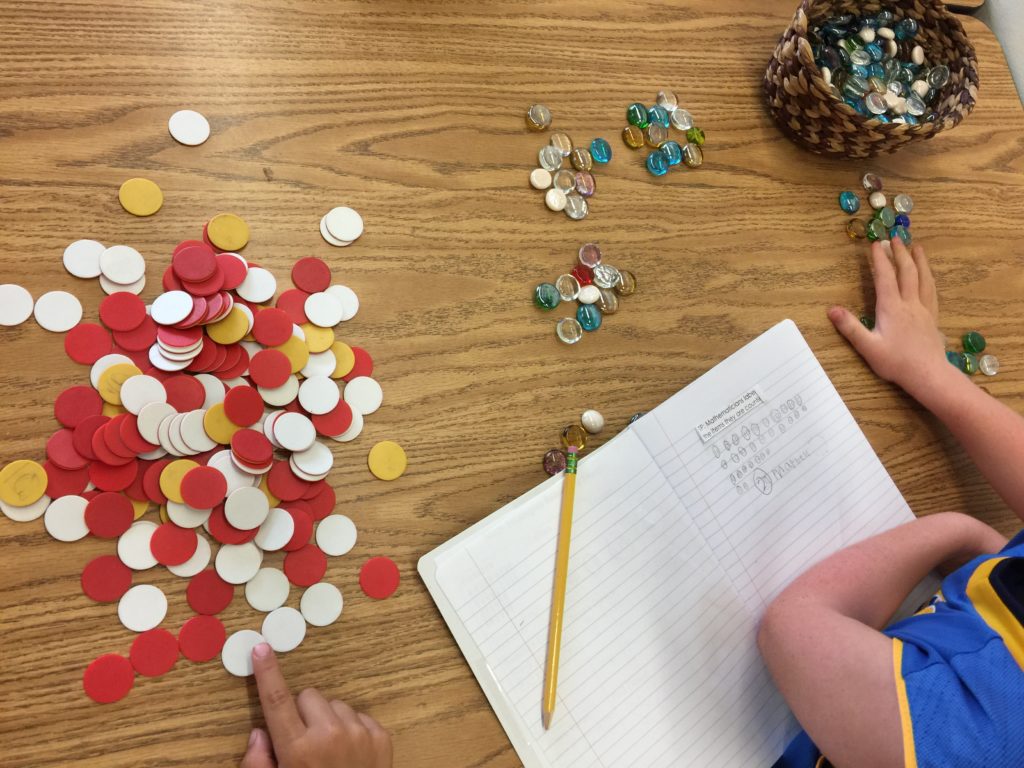
Two students were sitting together, each counting his own collection, but working side by side. One student had counted and recorded marbles in groups of 10. The other had a very large basket of red and yellow tokens on his lap counting them by 1’s as he removed them from the basket. He was on 310 when I arrived. Our conversation went as follows:
Teacher: (to the 2 students) Can you each tell me about your strategies for counting?
Child 1: I counted the marbles and wrote groups of 10, then a 4. The total is 84.
Child 2: I am counting these tokens by ones. See….310, 311, 312…
Teacher: (to child 2) I am wondering what you might do if someone bumped into the desk and some of the tokens you have already counted fell back into the basket.
Child 2: I would start over at the beginning.
At this point, my assumption was that this child was not aware of the benefit of grouping the tokens. I decided to ask Child 1 more about his grouping technique to see if Child 2 might benefit from overhearing our conversation.
Teacher: (to Child 1) Now that you are finished counting what will you do?
Child 1: I think I will count my collection again to see if I was accurate.
Teacher: Will you count by the same number or another number?
Child 2: (paused in his counting to interject his own idea) You could count by 5’s?
Teacher: Hmmm….I’m wondering if there would be more groups in your count if you count by 5’s instead of 10’s, or fewer.
Child 1: I think there would be less groups because 5 is smaller than 10.
Child 2: No, there would be more. Look, imagine you had 10 groups of 10. That would be 20 groups of 5. All you have to do is double it.
This was quite a surprise. I had incorrectly assumed, based on the strategy he was using to count his tokens, that Child 2 had little understanding of grouping. In fact, he revealed considerable knowledge of number relations, seeing that there would be twice as many groups if the collection were organized by fives, instead of by tens. I wonder: why was he choosing to count by ones? And how can I nudge him to use what he knows about grouping to count a large collection more efficiently?